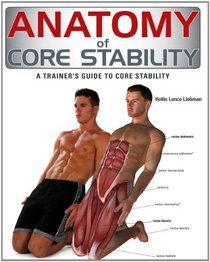Search -
Anatomy of Core Stability: A Trainer's Guide to Core Stability
Anatomy of Core Stability A Trainer's Guide to Core Stability
Author:
A strong, stable core is the foundation of virtually all physical efforts. Pilates and yoga practitioners as well as dedicated athletes are familiar with the concept of "core stability." They understand its importance in achieving and maintaining superior fitness. A strong and stable core improves athletic performance, increases power and en... more »
Author:
A strong, stable core is the foundation of virtually all physical efforts. Pilates and yoga practitioners as well as dedicated athletes are familiar with the concept of "core stability." They understand its importance in achieving and maintaining superior fitness. A strong and stable core improves athletic performance, increases power and en... more »
ISBN-13: 9781770851702
ISBN-10: 1770851704
Publication Date: 2/14/2013
Pages: 160
Rating: ?
ISBN-10: 1770851704
Publication Date: 2/14/2013
Pages: 160
Rating: ?
0 stars, based on 0 rating
Genres:
- Health, Fitness & Dieting >> Exercise & Fitness >> Weight Training
- Sports & Outdoors >> Training
- Science & Math >> Biological Sciences >> Anatomy




